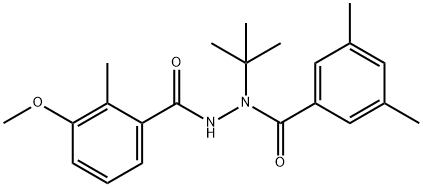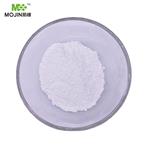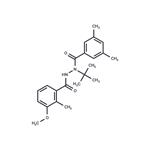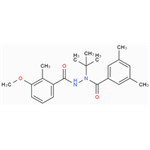Description
Methoxyfenozide, a substituted dibenzoylhydrazine, is an insecticide that functions by accelerating the moulting process. It acts as an ecdysone agonist or ecdysonoid, substituting for the natural insect moulting hormone, 20-hydroxyecdysone. Methoxyfenozide is active on all feeding larval stages of the target Lepidoptera.
It is used to control pests including codling moth, lesser apple worm, oriental fruit moth, leafrollers, cabbage looper, cotton bollworm, armyworm, and bud moths. It could be applied to leafy vegetables, fresh herbs, lettuce, salads, herbs, brassicas, cotton, pome fruit, grapes, sweetcorn, maize, peppers, and aubergines.
References
[1] http://sitem.herts.ac.uk/aeru/ppdb/en/Reports/461.htm
[2] http://www.fao.org
Chemical Properties
White crystalline solid or powder.
Definition
ChEBI: A carbohydrazide that is hydrazine in which the amino hydrogens have been replaced by 3-methoxy-2-methylbenzoyl, 3,5-dimethylbenzoyl, and tert-butyl groups respectively.
Hazard
Low toxicity by ingestion, inhalation, and
skin contact.
Agricultural Uses
Insecticide: Methoxyfenozide prevents insects from molting, or
shedding their exoskeleton in order to grow, e. g., caterpillars
and lychee webworms.
Trade name
INTREPID®; PRODIGY®
Potential Exposure
Methoxyfenozide is a diacylhydrazine
insecticide used to prevent insects from molting, or shedding their exoskeleton in order to grow, e.g., caterpillars
and lychee webworms
Shipping
UN3077 Environmentally hazardous substances,
solid, n.o.s., Hazard class: 9; Labels: 9-Miscellaneous hazardous material, Technical Name Required.
Incompatibilities
If this chemical gets into the eyes, remove any
contact lenses at once and irrigate immediately for at least
15 minutes, occasionally lifting upper and lower lids. Seek
medical attention immediately. If this chemical contacts the
skin, remove contaminated clothing and wash immediately
with soap and water. Seek medical attention immediately.
If this chemical has been inhaled, remove from exposure,
begin rescue breathing (using universal precautions) if
breathing has stopped, and CPR if heart action has stopped.
Transfer promptly to a medical facility. When this chemical
has been swallowed, get medical attention. Give large
quantities of water and induce vomiting. Do not make an
unconscious person vomit.
Waste Disposal
Dissolve or mix the
material with a combustible solvent and burn in a chemical
incinerator equipped with an afterburner and scrubber. All
federal, state, and local environmental regulations must be
observed.





